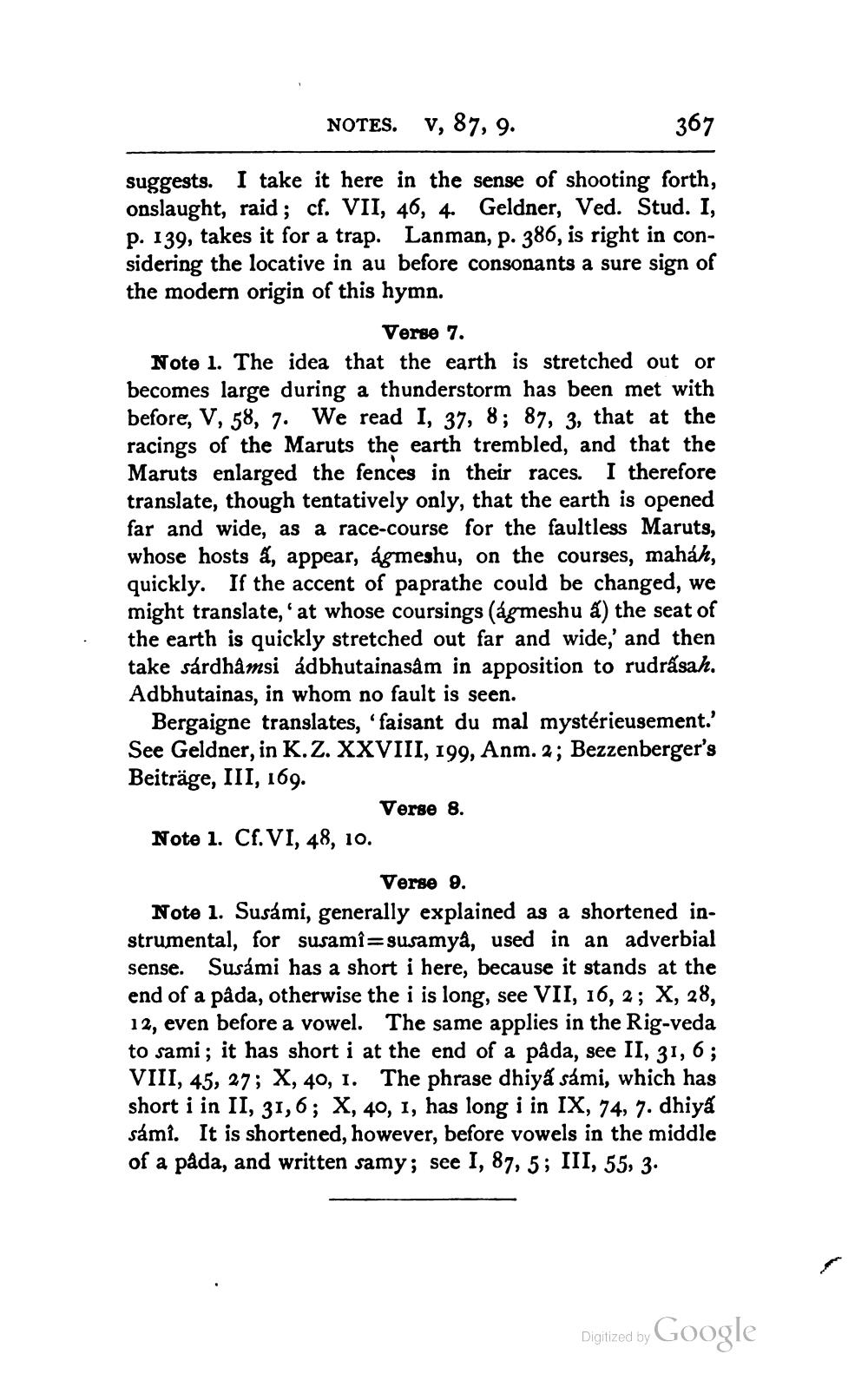________________
NOTES. V, 87, 9.
367
suggests. I take it here in the sense of shooting forth, onslaught, raid; cf. VII, 46, 4. Geldner, Ved. Stud. I, p. 139, takes it for a trap. Lanman, p. 386, is right in considering the locative in au before consonants a sure sign of the modern origin of this hymn.
Verse 7. Note 1. The idea that the earth is stretched out or becomes large during a thunderstorm has been met with before, V, 58, 7. We read I, 37, 8; 87, 3, that at the racings of the Maruts the earth trembled, and that the Maruts enlarged the fences in their races. I therefore translate, though tentatively only, that the earth is opened far and wide, as a race-course for the faultless Maruts, whose hosts a, appear, ágmeshu, on the courses, mahah, quickly. If the accent of paprathe could be changed, we might translate,' at whose coursings (ágmeshu a) the seat of the earth is quickly stretched out far and wide,' and then take sárdhamsi ádbhutainasam in apposition to rudrásah. Adbhutainas, in whom no fault is seen.
Bergaigne translates, 'faisant du mal mystérieusement.' See Geldner, in K.Z. XXVIII, 199, Anm. 2; Bezzenberger's Beiträge, III, 169.
Verse 8. Note 1. Cf.VI, 48, 10.
Verse 9. Note 1. Susámi, generally explained as a shortened instrumental, for susami=susamyà, used in an adverbial sense. Susámi has a short i here, because it stands at the end of a pâda, otherwise the i is long, see VII, 16, 2; X, 28, 12, even before a vowel. The same applies in the Rig-veda to sami; it has short i at the end of a pâda, see II, 31, 6; VIII, 45, 27; X, 40, 1. The phrase dhiya sámi, which has short i in II, 31,6; X, 40, 1, has long i in IX, 74, 7. dhiya sámi. It is shortened, however, before vowels in the middle of a påda, and written samy; see 1, 87, 5; III, 55, 3.
Digitized by
Digized by Google




